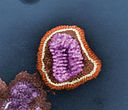
A vaccine is key to the COVID-19 global response strategy. However, it is not yet clear how any COVID-19 vaccine will or ought to be distributed, despite significant concerns about issues of fairness, equity, and justice. Developing countries may not have access to a COVID-19 vaccine without a governance framework guiding international allocation.
In 2011, the World Health Organization (WHO) adopted the Pandemic Influenza Preparedness Framework for the Sharing of Influenza Viruses and Access to Vaccines and Other Benefits (PIP Framework). The PIP Framework is the only international legal framework for the distribution of vaccines and other medical countermeasures and has been of how multilateral agreements can make the response to infectious disease crises more fair and equitable, especially for developing countries. The PIP Framework is only to be used during an influenza pandemic (so is not triggered by COVID-19), but prior to COVID-19, the WHO was (or something like it) to cover other pathogens.
But the PIP Framework was designed around a mechanism originally intended to be used in environmental conservation and it has never been put to the test of an actual influenza pandemic. We have raised concerns in the past about its ability to deliver on its promises to or enforce its own . Therefore, we feel a full and thorough examination of the PIP Framework’s text and operation since its adoption a decade ago can teach us valuable lessons for COVID-19 and future infectious disease crises.
This is the objective of , funded by the United Kingdom’s Arts and Humanities Research Council (AHRC), and headed by Dr Mark Eccleston-Turner at Keele University. It aims to assess the viability of international access and benefit-sharing models, including the PIP Framework, to determine what lessons can be applied to the distribution of COVID-19 vaccines. One lesson that is already clear from our analysis of the PIP Framework is the need for detail!
We are particularly concerned about the , the current proposal for a framework for the fair and equitable distribution of COVID-19 products (set to be finalised in August 2020) where the allocation of COVID-19 products is to be based on . This is the same rationale for the delivery of vaccines and other benefits to countries during an influenza pandemic under the PIP Framework. But after ten years, the PIP Framework and its Secretariat are yet to articulate what “fair and equitable” product allocation actually means. The itself merely states that one third of the PIP Framework’s stockpile “will be for use in affected countries, according to public health risk and need, to assist in containing the first outbreak or outbreaks of an emerging pandemic”; and two-thirds “will be for distribution, once a pandemic begins, to developing countries that have no or inadequate access to H5N1 influenza vaccines, on a per capita basis, with use to be determined by those countries”.
No further detail has been provided since 2011 when the PIP Framework was adopted. Such detail is particularly important when we are discussing the distribution of vaccines, which are likely to be available in very small numbers, from just a handful of manufacturers in the early stages of availability. We need more detail, not only for the WHO’s proposed Allocation Framework on COVID-19 health products, but for the PIP Framework. What does “fair and equitable” actually mean to the WHO? Can that definition change throughout the pandemic? What does the fair and equitable algorithm or decision matrix look like? When the first doses of a vaccine become available to WHO will they ship them to country A, or country B? To put it bluntly: how will the WHO decide ?
Over the last few years, countries have been losing trust in the PIP Framework, as evidenced by reduced sharing of virus samples to the . The lesson here is that if the WHO cannot provide details and clarity about how decisions will be made for the allocation of vaccines and other benefits (beyond throwing around what could fast become meaningless words like “fair and equitable”), then member states, pharmaceutical companies and other stakeholders will simply ignore these sorts of vaccine allocation frameworks as yet more well-intentioned but ultimately meaningless documents.
By and







